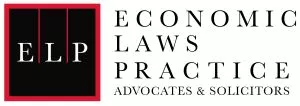- within Finance and Banking topic(s)
- in United States
- within Insolvency/Bankruptcy/Re-Structuring topic(s)
The International Financial Services Centre Authority ("IFSCA") vide a circular dated April 5, 2024, on "Ease of doing business – Filing of Schemes or funds under IFSCA (Fund Management) Regulations 2022" ("IFSCA Circular"), has simplified the process for launching of funds and schemes under the IFSCA (Fund Management) Regulations 2022 ("FM Regulations"). The newly simplified process provided for by the IFSCA circular applies to all schemes under the FM Regulations except Retail Schemes.
As per the IFSCA Circular, henceforth, Fund Management Entities (FMEs) can launch any scheme, other than a retail scheme, as soon the PPM along with the scheme application form (with all relevant documents attached) is filed with the IFSCA. The IFSCA Circular has listed out certain minimum disclosures required in the PPM of the scheme being launched. Additionally, when filing scheme documents with the IFSCA, FMEs are required to provide a declaration to the effect that all relevant disclosures, material to the Scheme or Fund, have been disclosed in the PPM.
Prior to this, in the case of Restricted Schemes, Regulation 31(2) of the FM Regulations required FMEs to wait for IFSCA's comments (if any) and ensure that these comments were incorporated in the PPM before proceeding with the launch. The 'green channel' route whereby FMEs were permitted to launch schemes immediately on filing of the PPM was available only to 'Venture Capital Schemes' and Restricted Schemes that solicited money only from accredited investors.
We compared the minimum disclosures required in the PPM as per the IFSCA Circular with the requirements prescribed by SEBI for PPMs vide its circular dated February 5, 2020 ("SEBI PPM Template"), which introduced two standardized templates for the PPMs, one for of Category I and Category II AIFs and another for Category III AIFs. The minimum disclosure requirements in the SEBI PPM Template which are not included in the IFSCA Circular are:
- Section on market opportunity/industry outlook/Indian economy;
- Section on Track Record of the Investment Manager;
- Following sub-items under Principal Terms of the fund:
-
- Excuse and Exclusion
- Defaulting Unitholders
- Hurdle Rate of Return
- Mandatory Exit of Investors
- Key Person & Key Person Event
- Listing
- Auditors
We did not find any item in the IFSCA Circular which isn't to be found in the SEBI PPM Template.
The IFSCA Circular also provides an updated scheme application form1, in which the following changes have been made:
- The requirement of providing the SEZ Letter of Approval is expressly provided in the form;
- The reference2 to the scheme being launched in form of a body corporate has been removed;
- All fees charged to the investors by the fund are to be disclosed in the form. Earlier it was limited to the fee being charged to the fund by the FME.
| ELP Comments |
|
Footnotes
1. Until now, the IFSCA's application form was available at
2. Contained in para 3.4 of the old form
3. USD 75,000 for of the FME of a VCS and USD 5,00,000 for the FME of a restricted scheme
4. The FME or its associate shall invest (a) at least 2.5% of the targeted corpus and not exceeding 10% of the targeted corpus in a scheme with targeted corpus of less than USD 30 Million; or (b) at least USD 750,000 and not exceeding 10% of the targeted corpus in a scheme with targeted corpus of more than USD 30 Million.
The content of this article is intended to provide a general guide to the subject matter. Specialist advice should be sought about your specific circumstances.
[View Source]


